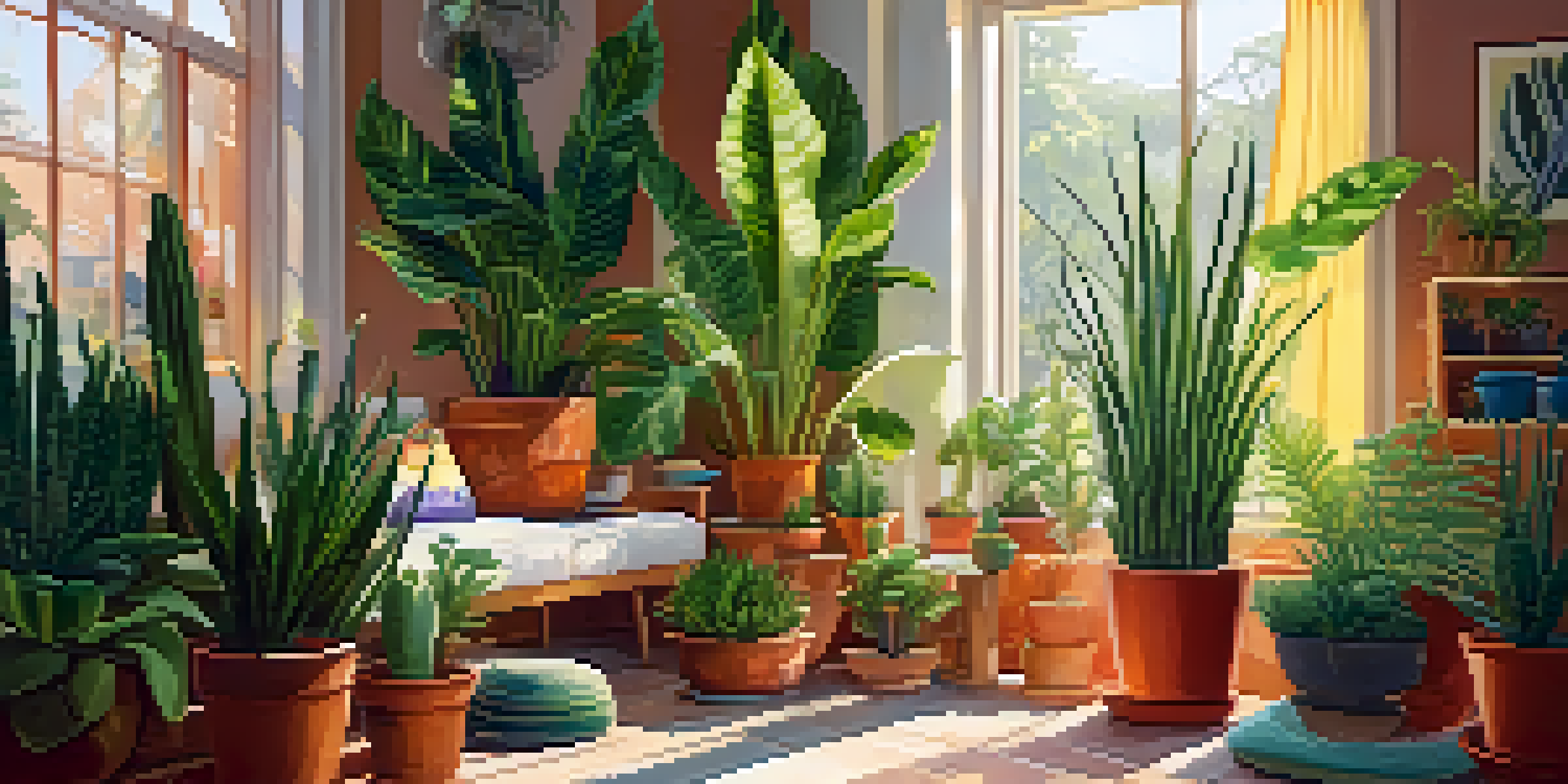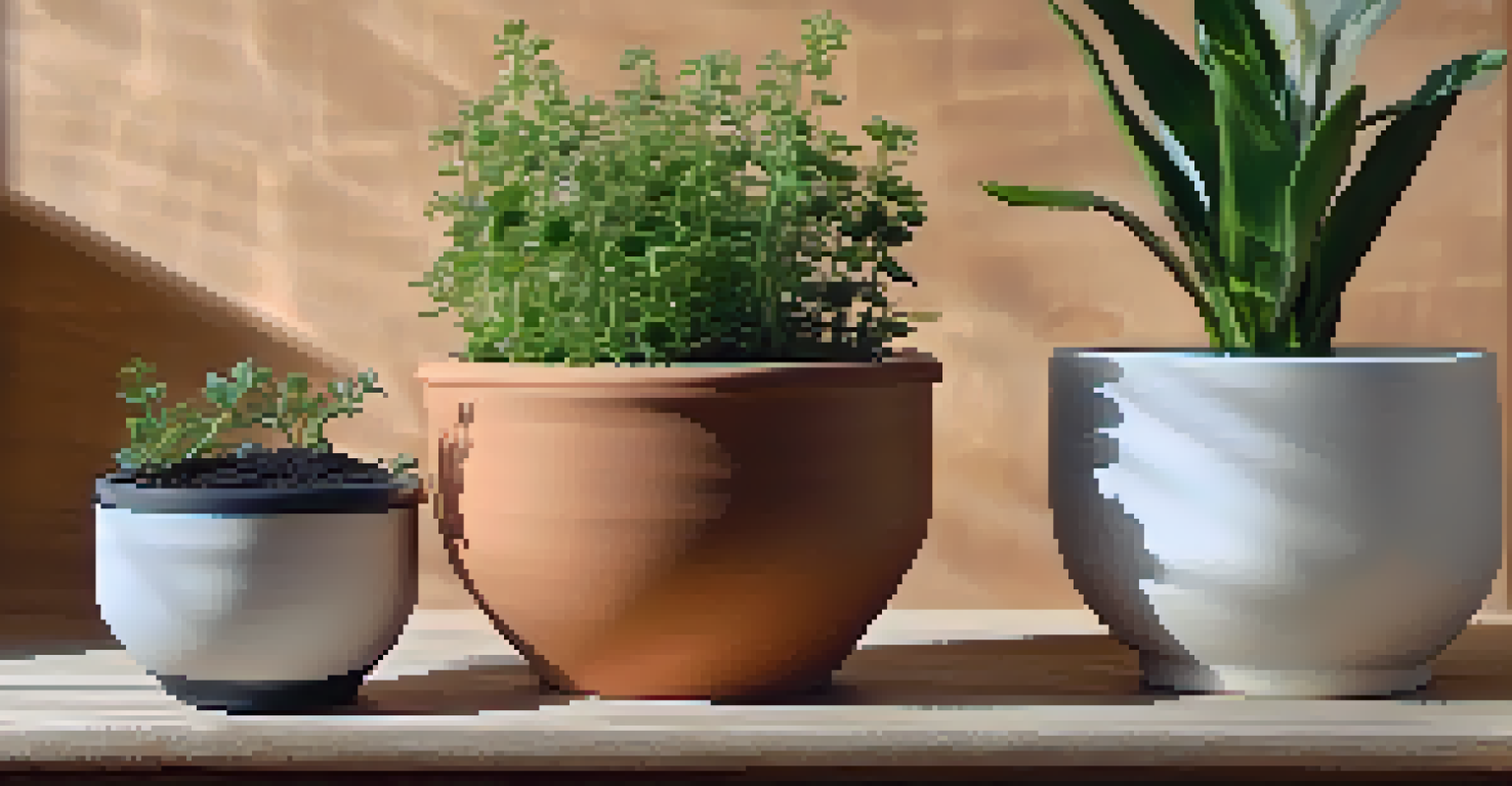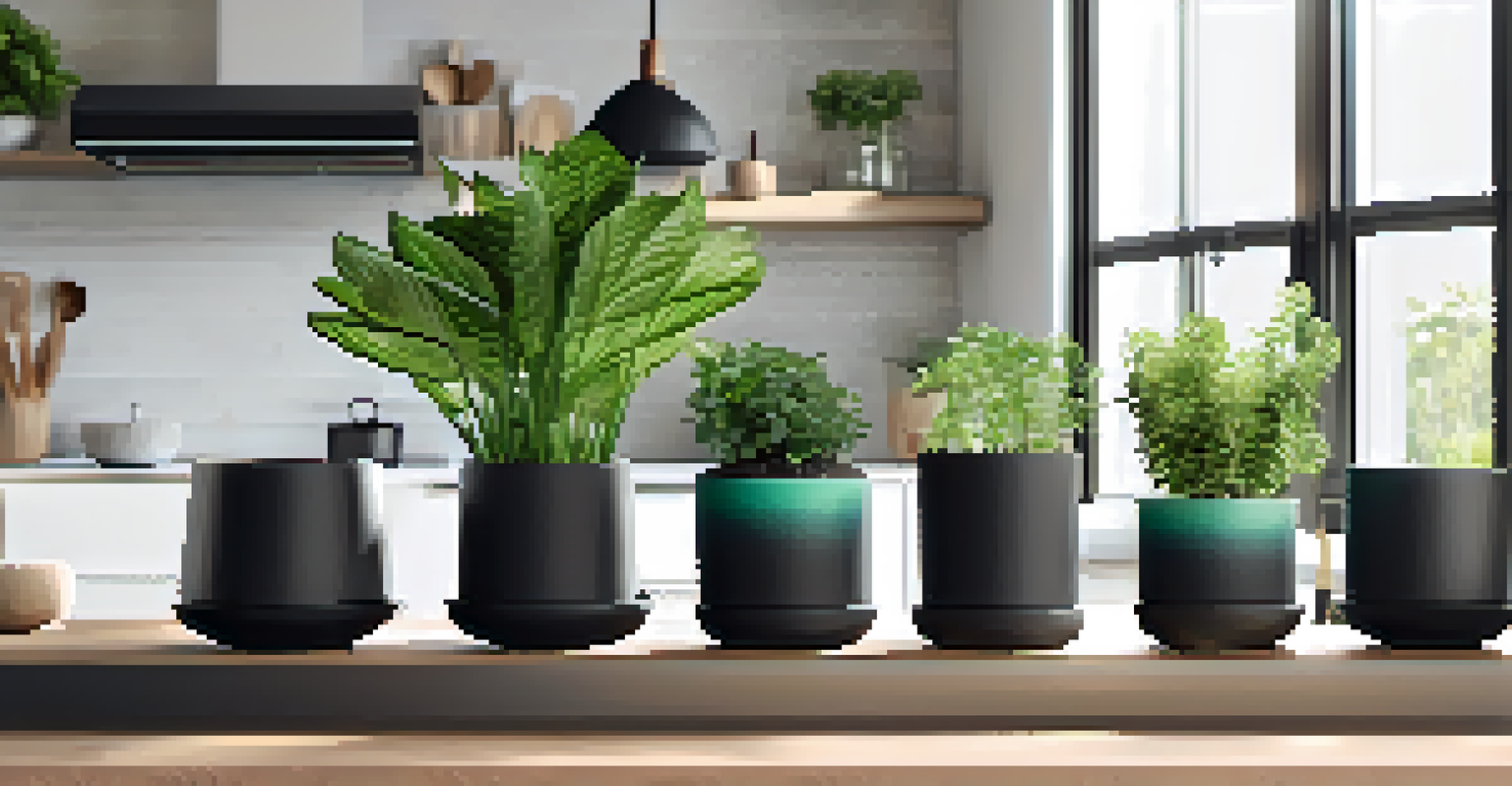How to Choose the Right Pot for Your Indoor Plants

Understand Your Plant's Needs for Pot Selection
Every plant has unique requirements, and understanding these is essential when choosing a pot. For example, succulents prefer pots that offer excellent drainage, while ferns might thrive in slightly more moisture-retaining containers. Knowing whether your plant is a drought-tolerant type or prefers consistent humidity can guide you in selecting the right material and size for its pot.
Plants are like people; they thrive when they feel at home.
Consider the mature size of your plant, as some may outgrow their pots quickly. A small pot might be ideal for seedlings, but they’ll eventually need a larger one to accommodate their root system. Additionally, the pot's depth can impact root growth, so ensure it’s deep enough for your plant’s needs while allowing for healthy drainage.
Don't forget to factor in the environment where your plant will live. High humidity areas like bathrooms might suit different pot materials compared to dry spaces. By aligning your pot choice with your plant's specific needs, you set the stage for healthy growth and flourishing greenery.
Choosing the Right Material for Your Pot
The material of your pot can significantly influence your plant's health. Common options include plastic, clay, ceramic, and metal, each with its pros and cons. For instance, terracotta pots are porous and great for plants that need good airflow, while plastic pots are lightweight and retain moisture well.

Additionally, consider the insulation properties of the material you choose. Clay pots tend to keep soil cooler, which is beneficial for plants that prefer cooler conditions, while metal pots can heat up quickly in warm environments. This can lead to overheating the roots, so think about the climate where you’ll place your plant.
Know Your Plant's Needs
Understanding your plant's specific requirements for moisture, size, and environment is crucial for selecting the right pot.
Lastly, aesthetics matter too! Choose a pot that complements your home decor while being functional. A beautiful ceramic pot might catch your eye, but ensure it also meets your plant's needs for drainage and moisture retention.
Size Matters: Finding the Right Pot Size
When selecting a pot, size is crucial. A pot that's too small can restrict root growth, while one that's too large may lead to overwatering. It’s often recommended to choose a pot that is one size up from the current one your plant is in. This allows for growth without overwhelming the plant with excess soil.
The best time to plant a tree was 20 years ago. The second best time is now.
For example, if you’re repotting a young snake plant, moving it to a pot that's about 2 inches wider in diameter can provide ample space for expansion. On the other hand, for larger plants, make sure the new pot can accommodate their extensive root systems without causing root rot due to stagnant water.
Remember, a pot’s depth also plays a role. Deep pots are ideal for plants with long root systems, while shallow pots work well for those with shorter roots. Always keep your plant's growth pattern in mind when choosing the right size.
Drainage: The Key to Healthy Indoor Plants
Drainage is a non-negotiable factor in pot selection. Without proper drainage, water can accumulate at the bottom, leading to root rot and a host of other issues. Always opt for pots that have drainage holes to allow excess water to escape, ensuring your plant's roots stay healthy and oxygenated.
If you find a pot you love that doesn't have drainage holes, consider using it as a decorative outer pot. Place a plastic or terracotta pot inside it, which has drainage, to create a beautiful display while protecting your plant from excess moisture.
Choose the Right Material
The pot material impacts drainage, insulation, and overall plant health, so consider options like plastic, clay, or ceramic carefully.
Another option is to use pots with built-in drainage systems. Some modern designs feature self-watering systems that can help maintain optimal moisture levels without the risk of overwatering. These can be especially helpful for busy plant parents!
Consider the Weight of Your Pot
The weight of your pot can impact how easily you can move your plants around. If you plan to rearrange your indoor garden frequently, lightweight materials like plastic can be a practical choice. On the other hand, heavier materials like ceramic or stone offer stability, which can be important for taller plants that might tip over easily.
Think about where you’ll place your plant as well. If it’s on a delicate surface like a countertop or a shelf, a heavier pot might cause damage if it falls. Conversely, if it’s on a sturdy surface, the weight can help anchor it and prevent it from being knocked over.
Ultimately, the right weight balances aesthetics and functionality. Consider how you want to display your plant and choose a pot that fits your lifestyle without compromising safety or style.
Style and Aesthetics: Making Your Pot a Design Feature
Choosing a pot is not just about function; it’s also about style! Your plant pot can be a fantastic way to express your personal taste and tie together your room’s decor. From sleek modern designs to rustic terracotta, the options are endless, so don't shy away from selecting a pot that makes a statement.
Consider the colors and patterns that complement your space. A bright, bold pot can serve as a focal point, while a more neutral pot can provide a subtle backdrop for your vibrant plants. Whichever route you take, ensure that the pot's design aligns with your home’s overall vibe.
Prioritize Proper Drainage
Ensure your pot has adequate drainage holes to prevent water accumulation, which can lead to root rot and other issues.
Also, think about how the pot will fit with seasonal decor changes. A simple, classic design can transition beautifully through different seasons and styles, making it a versatile choice for any home.
Budgeting for Your Plant Pot Purchase
When it comes to choosing pots, budgeting is essential. Prices can vary widely based on materials, designs, and brands, so it’s wise to set a budget before you start shopping. While it’s tempting to splurge on an eye-catching ceramic pot, remember that your plant's health should always come first.
Look for pots that offer both quality and affordability. Sometimes, you can find beautiful options at local garden centers or online retailers that won’t break the bank. Don’t forget to check for sales or discounts, especially during the planting season, to score the best deals.

Ultimately, investing in a good pot is crucial for your plant's well-being. A well-chosen pot can last for years, providing your plants with the proper environment to thrive while adding beauty to your space.